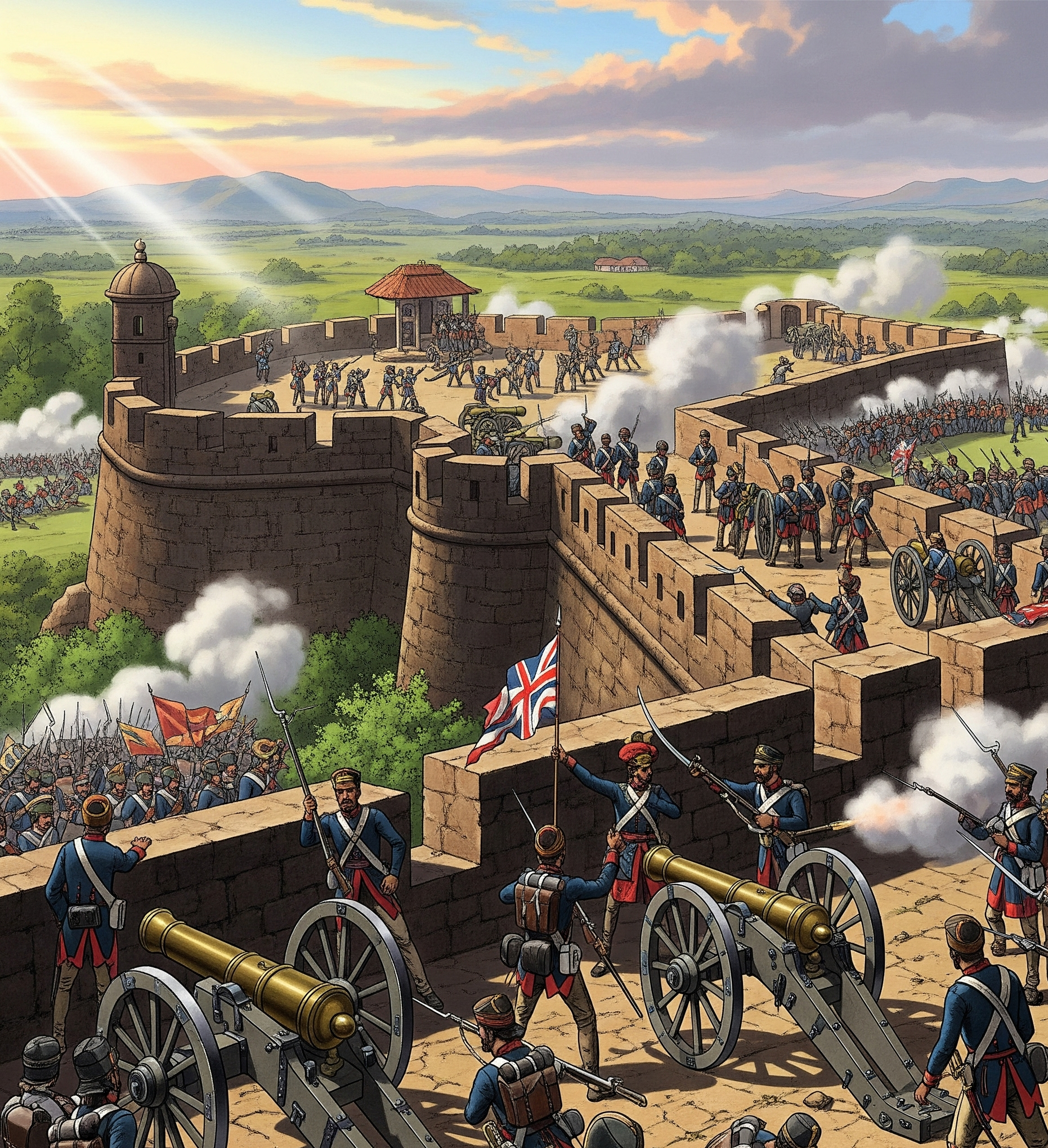
The Battle of Palakkad Fort: Hyder Ali, Tipu Sultan, and the Struggle for Malabar
The Palakkad Fort, a formidable structure in the heart of Kerala, stands as a silent witness to the turbulent history of the 18th century in South India. Its walls have seen the rise and fall of dynasties, the ambitions of Mysore’s rulers, and the relentless campaigns of the British East India Company. The saga of its capture and recapture by Hyder Ali and later by his son Tipu Sultan is a fascinating chapter in the annals of Indian history.
Origins and Strategic Significance
Palakkad Fort’s origins trace back to ancient times, but its present form was shaped in 1766 when Hyder Ali, the powerful Sultan of Mysore, reconstructed and fortified it. The fort’s location at the Palakkad Gap, a crucial pass in the Western Ghats made it strategically vital. Whoever controlled the fort held the gateway between the Tamil plains and the Malabar coast, making it a coveted prize for regional powers.
Hyder Ali’s Ambitions and the First Capture
In the mid-18th century, the political landscape of Malabar was volatile. The local ruler, Palakkad Achchan, once a tributary of the Zamorin of Calicut, had asserted independence. However, constant threats from the Zamorin forced him to seek military assistance from Hyder Ali in 1757. Sensing an opportunity, Hyder Ali intervened, quickly seizing Palakkad and taking the king, Ittikombi Achan, prisoner. The fort became a key Mysorean outpost, with Hyder Ali entrusting tax collection to his loyalists and using the fort as a base for further campaigns in Malabar.
The Anglo-Mysore Wars and Shifting Control
In the late 1700s, Palakkad was caught in the conflict between Mysore and the British. During the First Anglo-Mysore War (1767–69), British forces led by Colonel Wood took Palakkad Fort in 1768, but Hyder Ali quickly took it back within months. The fort’s strong walls, deep moat, and good supplies made it a tough place to conquer. Hyder Ali’s death in 1782 marked a turning point. His son, Tipu Sultan, inherited both the throne and the ongoing struggle against the British. The Second Anglo-Mysore War (1780–84) saw the fort become a focal point of conflict. In 1783, British forces led by Colonel Fullarton besieged the fort for eleven days, eventually capturing it. However, the British soon withdrew, leaving the fort under the protection of the Zamorin’s troops, only for Tipu Sultan to recapture it with deft strategy.
Tipu Sultan’s Campaigns and Innovations
Under Tipu Sultan, Palakkad Fort was more than a military bastion; it became a center of administration and innovation. Tipu used the fort as a mint, introducing new coins such as the ‘Hydari’ and ‘Sultan panam’ to replace older local currencies, reflecting his efforts to consolidate Mysorean authority in the region. The fort also served as a launchpad for campaigns against both the British and the Zamorin, and at times even as Tipu’s residence during his Malabar expeditions. Tipu’s resistance was fierce, but the British were determined. After several changes of hands, the fort finally fell to the British under Colonel Stuart in 1790, who used it as a base for their decisive campaign against Tipu Sultan, culminating in the storming of Srirangapatnam.
Architecture and Legacy
Palakkad Fort’s design shows its military purpose and the culture of its time. Built to handle long attacks, it could hold over 10,000 soldiers and store plenty of food and weapons. Inside the fort is the Anjaneya Swami temple, which combines local tradition with its military history.
Today, Palakkad Fort is one of Kerala’s best-preserved forts. It reminds us of the ambitions of Hyder Ali and Tipu Sultan and the battles for control in the 18th-century Deccan. Its rich history continues to attract historians and visitors, giving a glimpse into a time of war, power struggles, and changing empires.
The Battle of Palakkad Fort was not a single event but a series of dramatic contests that shaped the fate of Malabar. From Hyder Ali’s shrewd capture and reconstruction, through Tipu Sultan’s determined campaigns and administrative reforms, to its eventual fall to the British, the fort’s history mirrors the broader struggles of South India in the 18th century a time of ambition, resistance, and transformation.